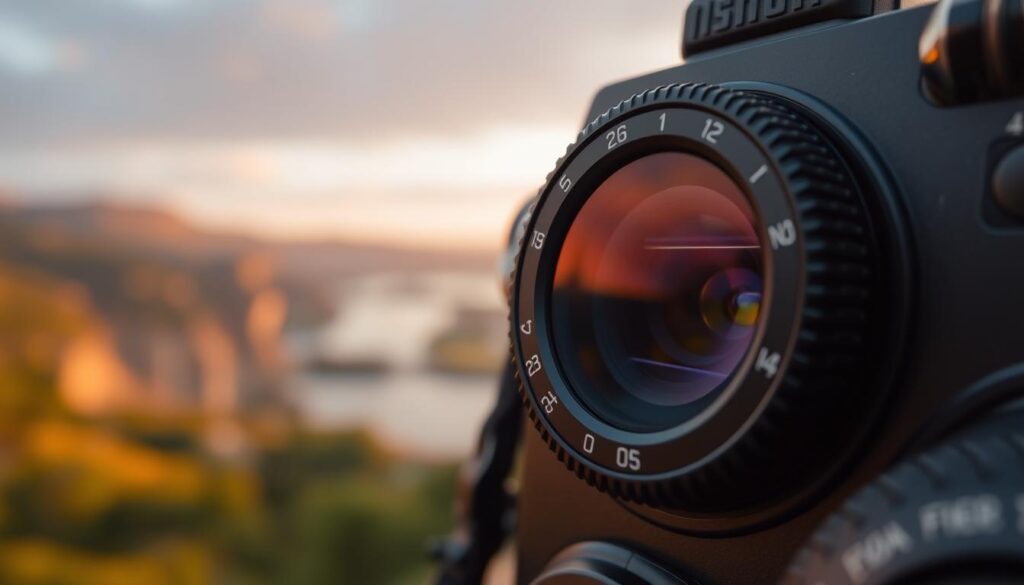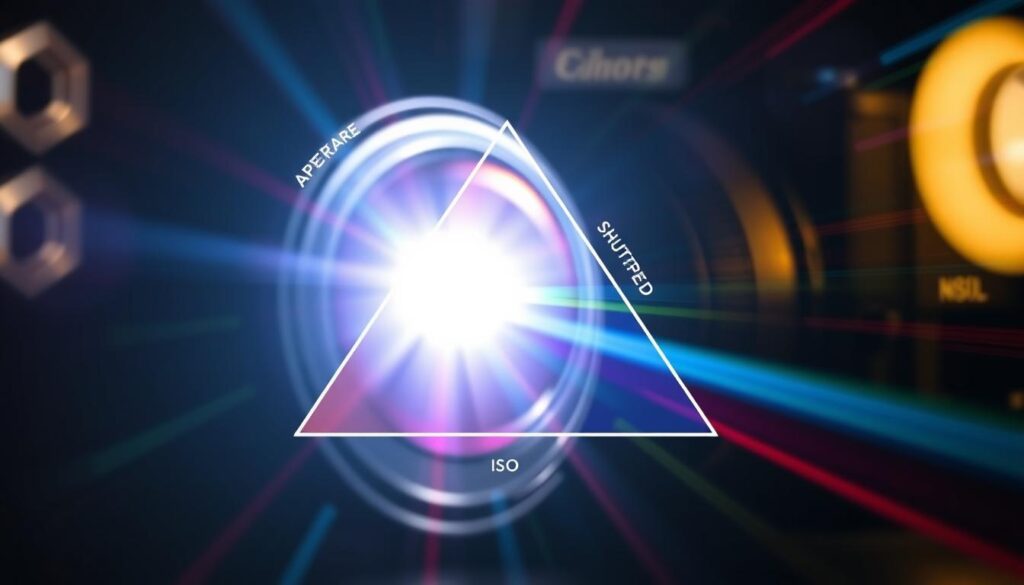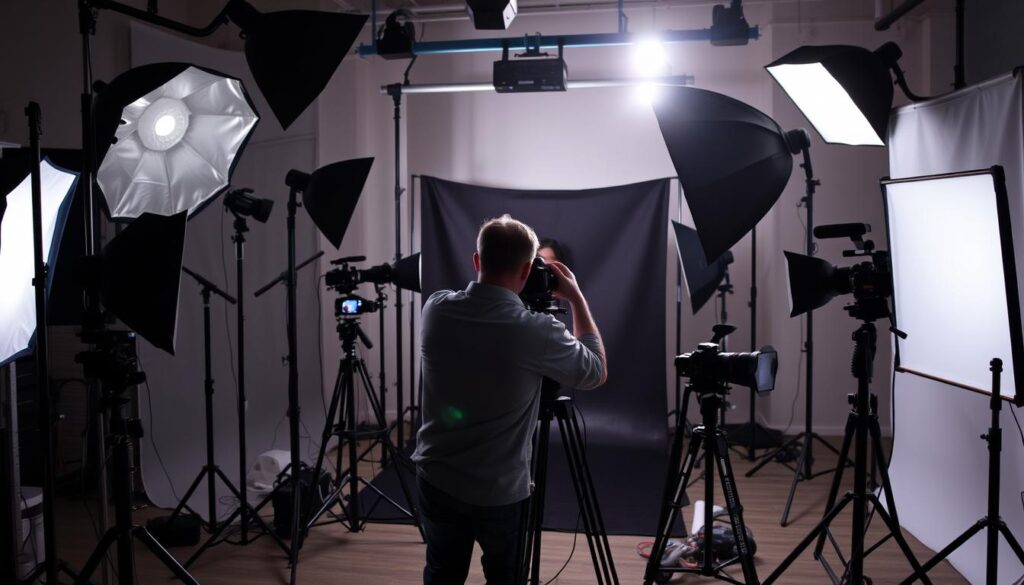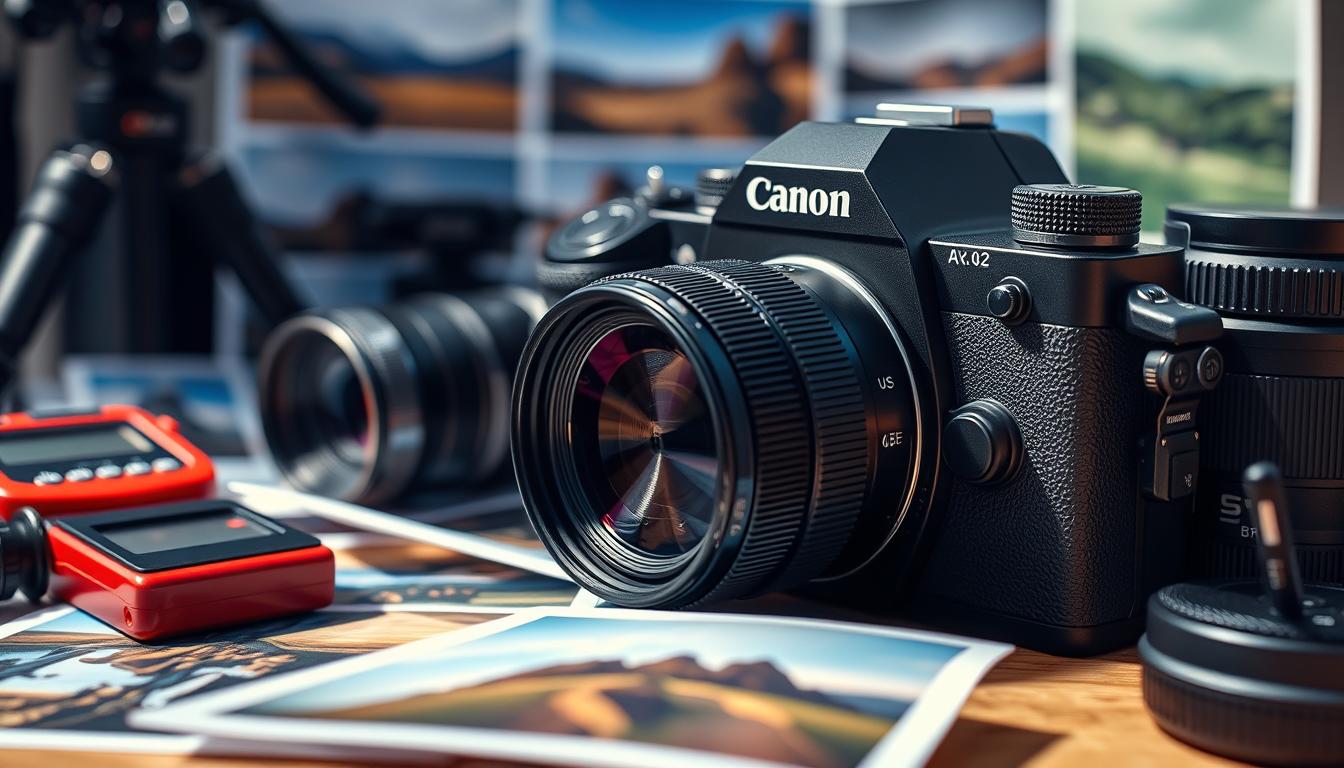Mastering photography technical skills is key to better photos. Knowing how to use your camera’s settings like aperture, shutter speed, and ISO is important. This lets you control your photography and improve your skills. With practice and patience, you can take stunning photos using the right settings.
Getting better at photography and knowing your camera settings can really improve your photos. Learning to use your camera’s settings lets you take the photos you want. Whether you’re new or experienced, knowing your camera settings is vital for better photos.
Introduction to Photography Technical Skills
Improving your photography skills and knowing your camera takes time and effort. With hard work and patience, you can get better at photography. Mastering technical skills and camera settings is essential for taking amazing photos and reaching your photography goals.
Key Takeaways
- Mastering photography technical skills is essential for taking better photos
- Understanding camera settings, such as aperture, shutter speed, and ISO, is critical for improving photography technical skills
- Practice and patience are necessary for developing photography technical skills and mastering camera settings
- Improving photography technical skills and camera settings can significantly enhance your photo quality
- Mastering photography technical skills and camera settings is the key to capturing stunning images and achieving your photography goals
- Developing photography technical skills and understanding camera settings takes time and dedication
Understanding Essential Photography Technical Skills
Mastering photography means knowing the technical skills well. This includes lighting and composition rules. Learning camera functions and technical terms is key. It lets you control your camera and take great photos.
Lighting is key for amazing photos. You need to know how to use natural and artificial light. Learning lighting techniques adds depth and beauty to your photos. Also, following composition rules like the rule of thirds makes your photos balanced and pleasing.
- Aperture and shutter speed control
- ISO settings and sensitivity
- White balance and color theory
- Depth of field control
Mastering these skills will take your photography to new heights. Practice often and try new things. This will help you find what works best for you.
| Technical Skill | Description |
|---|---|
| Aperture Control | Regulates the amount of light entering the camera |
| Shutter Speed Mastery | Controls the duration of exposure to light |
| ISO Settings | Adjusts the camera’s sensitivity to light |
Mastering Manual Mode Settings
Learning manual mode settings is key to controlling your photography. You need to know the exposure triangle: aperture, shutter speed, and ISO. These settings help you get the right brightness, contrast, and color in your photos, all while keeping exposure control.
When using manual mode, keep these points in mind:
- Aperture: This setting controls how much light gets into the lens. A low f-stop value (like f/2.8) means a big aperture. A high value (like f/16) means a small aperture.
- Shutter Speed: This setting determines how long the camera’s shutter is open. Fast shutter speeds (like 1/1000th of a second) are great for sharp photos of moving things. Slow speeds (like 1 second) can make things look like they’re moving.
- ISO: This setting affects how sensitive the camera is to light. Low ISO values (like ISO 100) work best in bright light. High values (like ISO 6400) are better for dark places.
By mastering manual mode and the exposure triangle, you can improve your photography. With time and effort, you’ll take amazing photos that show your unique style.

Exposure Triangle: The Technical Foundation
The exposure triangle is key to mastering photography. It’s about balancing aperture, shutter speed, and ISO. Knowing how these elements work together is vital for great photos.
Aperture lets light into the lens, shutter speed controls exposure time, and ISO changes light sensitivity. By getting these right, you can capture the perfect mood and effect in your photos.
Aperture Control
Aperture is important for depth of field. A small aperture means more of the image is in focus. A large aperture makes the background blur.

Shutter Speed Mastery
Shutter speed is key for motion or freeze. Fast speeds freeze action, slow speeds blur it. Mixing shutter speed with aperture and ISO lets you create amazing effects.
Understanding the exposure triangle and other technical aspects boosts your photography. You’ll capture images that truly stand out.
Advanced Focus Techniques and Systems
Getting sharp images is key for photographers. They need to know about autofocus modes like single shot and continuous. Image resolution optimization is also vital for top-notch photos.
Photographers have many autofocus modes to pick from. These include:
- Single shot mode, perfect for steady subjects
- Continuous mode, great for moving subjects
- Manual focus mode, for full control over focus
Knowing these modes is just the start. Photographers also need to work on their post-processing skills. This means editing and fine-tuning photos to get the perfect look.
Focus stacking is another advanced technique. It combines images for a deeper field of view. It’s great for small objects or scenes with lots of depth.
By mastering these techniques, photographers can improve their skills. Whether it’s through image resolution optimization or post-processing skills, they should always aim to get better. This way, they can create standout images.
Lighting Techniques for Professional Results
Mastering photography technical skills means understanding lighting. Lighting can make or break a photo. It’s key to know how to use it to set the mood and atmosphere.
Aperture and shutter speed are vital in camera settings. They help control brightness and contrast in your images.
Natural, artificial, and mixed lighting are the main types. Natural light is often the most flattering but can be unpredictable. Artificial light can be controlled for the desired effect. Mixed lighting uses both natural and artificial light for a unique look.
Important lighting techniques include:
- Understanding the color temperature of different light sources
- Using lighting to create depth and dimension in an image
- Experimenting with different lighting setups to achieve the desired mood and atmosphere
By mastering lighting and camera settings, photographers can improve their skills. They can then produce professional-quality images.

Lighting is one of the most critical elements in photography, and it’s essential to understand how to use it to create the desired effect.
| Lighting Type | Description |
|---|---|
| Natural Light | Light that comes from the sun or other natural sources |
| Artificial Light | Light that comes from man-made sources, such as lamps or strobes |
| Mixed Light | A combination of natural and artificial light sources |
Understanding White Balance and Color Theory
Getting the colors right in photos is key. Knowing about white balance and color theory helps a lot. It lets photographers tweak the colors to look natural. This skill boosts their lighting techniques and photo quality.
Color temperature in photos is measured in Kelvin (K). It affects the mood of the image. Warm colors like orange and yellow make scenes cozy. Cool colors like blue and green calm the atmosphere. Using composition rules like the rule of thirds makes photos more engaging.

To get colors right, photographers use custom white balance or color calibration. These methods give them control over the color temperature. This ensures the colors look natural. By mixing these methods with good lighting techniques and composition rules, they create eye-catching photos.
Color Temperature Basics
- Warm colors: orange, yellow, red
- Cool colors: blue, green, purple
- Neutral colors: black, white, gray
Custom White Balance Settings
Custom white balance settings let photographers adjust the color temperature. This is useful in mixed lighting or when auto white balance fails. It helps get the colors just right.
Mastering Depth of Field Control
Getting the right amount of blur or sharpness in your photos is key. To do this, you need to understand how aperture works. Aperture, along with exposure control, is vital for the image’s look.
Adjusting camera settings is important for the desired effect. Don’t forget about white balance adjustment. It helps ensure the image’s brightness and color are just right. With these skills, your photos will look great and professional.
Here are some tips for mastering depth of field control:
- Learn how aperture affects depth of field.
- Use exposure control to adjust brightness.
- Adjust white balance for the right color tone.
Follow these tips and practice with different settings. This will help you improve your photography skills.
| Camera Setting | Effect on Depth of Field |
|---|---|
| Large Aperture | Shallow Depth of Field |
| Small Aperture | Deep Depth of Field |
Image Resolution and File Format Optimization
Understanding image resolution and depth of field is key for top-notch photos. Depth of field lets photographers choose what’s in focus. Image resolution makes sure the photo looks good where it’s used.
Many photographers wonder if they should shoot in RAW or JPEG. RAW files give more room for editing because they hold more data. JPEG files are smaller and easier to share. It really depends on what the photographer needs.
Here are some tips for optimizing image resolution:
- For the web, use 72 dpi and 1000-2000 pixels on the longest side.
- For prints, aim for 300 dpi and 2000-4000 pixels on the longest side.
- For professional work, go for 600 dpi and 4000-8000 pixels on the longest side.
It’s also important to store and back up your photos well. Use external hard drives, cloud storage, or both to keep your photos safe and easy to find.
By mastering image resolution and depth of field, photographers can improve their skills. They can create stunning images that meet their goals and impress everyone.
| File Format | Advantages | Disadvantages |
|---|---|---|
| RAW | More editing options | Files are bigger |
| JPEG | Files are smaller, easy to share | Less editing flexibility |
Post-Processing Techniques for Enhanced Images
Learning post-processing skills is key to improving your photography. These techniques help make your images look better and more professional. Knowing how to use your camera’s settings is important for this.
There are several important post-processing techniques. Basic image adjustments like exposure and color balance can greatly improve your photos. Also, advanced editing tools like layers and filters can add complex effects.
- Organize your images into folders and catalogs to streamline your editing process
- Use batch editing to apply consistent adjustments to multiple photos at once
- Experiment with different editing software and plugins to find the tools that work best for you
By improving your post-processing skills and using your camera well, you can make amazing photos. These photos will show off your creativity and technical skills.
Conclusion
Mastering photography technical skills are the key to taking amazing photos. You’ll learn about camera functions, the exposure triangle, focus techniques, and lighting. This knowledge will help you improve your photography skills.
Improving your skills is a continuous journey. Keep trying new camera settings and lighting methods. This will help you find your unique style. With hard work and a desire to learn, you can make photos that grab people’s attention.
Always be curious and ready for new challenges. Photography offers endless possibilities. By practicing your skills, you’ll become more confident and skilled. Your photos will then leave a lasting impression on everyone who sees them.
FAQ
What are the core camera functions I need to understand?
You need to know about different shooting modes like manual and aperture priority. Also, understand exposure settings like aperture, shutter speed, and ISO. Lastly, learn about focus modes, including autofocus and manual focus.
What is the exposure triangle, and how do I use it to achieve proper exposure?
The exposure triangle includes aperture, shutter speed, and ISO. By adjusting these, you can control brightness, depth of field, and motion blur. This helps you get the right exposure for your photos.
How do I use lighting techniques to create professional-looking photos?
To improve your photos, learn about lighting techniques. This includes using natural, artificial, and mixed lighting. You’ll need to know how to place light sources and control their intensity and direction. Reflectors or diffusers can also help achieve the desired effect.
What are some advanced focus techniques I can use?
Advanced focus techniques include using autofocus modes like single shot and continuous. You should also learn about focus stacking and how to fine-tune your focus for sharper images.
How do I optimize image resolution and file format for different uses?
It’s important to optimize image resolution and file format for various uses. You need to know the difference between RAW and JPEG files. Also, understand the resolution requirements for web, print, or large-scale displays.
What post-processing techniques can I use to enhance my images?
Post-processing techniques can greatly improve your images. This includes basic adjustments like exposure and contrast. You can also use advanced tools like layers and masking. Plus, optimizing your workflow can make editing easier.
How do I use white balance and color theory to capture accurate colors?
To capture accurate colors, understand white balance and color theory. Learn about color temperature and how to set custom white balance. Also, know methods for color calibration to ensure your camera’s colors are accurate.
How do I control depth of field to achieve the desired level of blur or sharpness?
Controlling depth of field is key for visually appealing images. Use aperture settings to adjust the depth of field. This lets you blur the background or keep the entire scene sharp, based on your vision.
